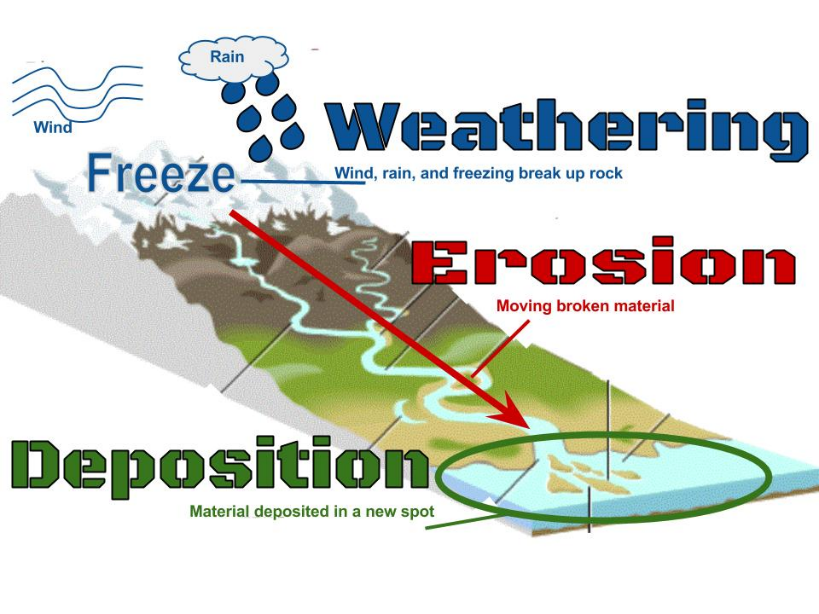

Fluvial landform development is a dynamic process influenced by the continuous movement of water in rivers and streams. This process involves several key stages and mechanisms that shape the landscape over time. Here are the key processes involved in fluvial landform development:
Weathering: Weathering plays a crucial role in the development of fluvial landforms by breaking down rocks and minerals through physical, chemical, and biological processes, making them more susceptible to erosion and transportation by rivers and streams.
Erosion: Erosion is the process by which the river wears away the land. There are several types of erosion:
Transportation: Transportation is the movement of sediment downstream. The main types of transportation are:
Deposition: Deposition occurs when the river loses energy and drops the sediment it has been carrying. This can happen when the river slows down, for example, when it enters a lake or the sea, or when the volume of water decreases.
Formation of Landforms: Over time, the processes of erosion, transportation, and deposition lead to the formation of various fluvial landforms V-Shaped Valleys, Waterfalls and Rapids, Meanders, Oxbow Lakes and Floodplains etc.